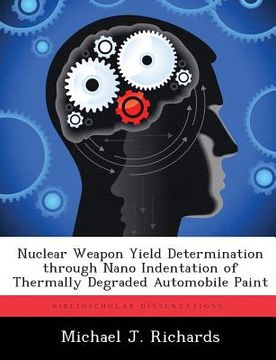Share
Nuclear Weapon Yield Determination through Nano Indentation of Thermally Degraded Automobile Paint (in English)
Michael J. Richards
(Author)
·
Biblioscholar
· Paperback
Nuclear Weapon Yield Determination through Nano Indentation of Thermally Degraded Automobile Paint (in English) - Richards, Michael J.
$ 48.80
$ 57.95
You save: $ 9.15
Choose the list to add your product or create one New List
✓ Product added successfully to the Wishlist.
Go to My WishlistsIt will be shipped from our warehouse between
Thursday, July 04 and
Friday, July 05.
You will receive it anywhere in United States between 1 and 3 business days after shipment.
Synopsis "Nuclear Weapon Yield Determination through Nano Indentation of Thermally Degraded Automobile Paint (in English)"
This work investigated the suitability of automotive clearcoat as a nuclear weapon yield sensor, using the change in elastic modulus as the primary metric. The AFIT Xenon Thermal Simulator (AXTS) was used to simulate a nuclear thermal pulse. The elastic modulus of the clearcoat was measured using a nano indenter. During this research the power density of the AXTS beam was increased from 44.7 to 63.7 W/cm2. The morphological steps through which automobile paint proceeds as it thermally degrades were identified and correlated with temperatures. A computer model was created and used to ensure that the paint's time-temperature response to the AXTS pulse was comparable to that of a replicate nuclear thermal pulse. Clearcoat's physical properties exhibit a low sensitivity to incident thermal energy. Variability among these properties remains essentially unchanged by exposure to the thermal pulse. A weak correlation between change in elastic modulus and exposure time was identified. A similarly weak correlation between exposure time and each of load on sample, harmonic stiffness, and hardness was also identified. It was concluded that these correlation were too weak to be used for post-detonation forensics.
- 0% (0)
- 0% (0)
- 0% (0)
- 0% (0)
- 0% (0)
All books in our catalog are Original.
The book is written in English.
The binding of this edition is Paperback.
✓ Producto agregado correctamente al carro, Ir a Pagar.

